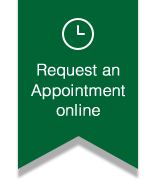
Online orthodontic companies have flooded social media with before-and-after photos and testimonials claiming easy, affordable treatment without ever setting foot in a dental office. But when it comes to moving your teeth and changing your bite, convenience shouldn’t be your only consideration.
Choosing between local orthodontic treatment and online alternatives involves weighing factors that extend far beyond cost and convenience. Your orthodontic treatment affects not only your smile’s appearance but also your bite function, jaw health, and long-term oral wellness. Understanding the differences between these approaches will help you make an informed decision that protects your investment and your health.
Understanding Your Treatment Options
Local orthodontic treatment involves working directly with a licensed orthodontist who examines your teeth, takes detailed records, and creates a personalized treatment plan. This traditional approach includes regular in-person visits throughout your treatment for adjustments and monitoring.
Online orthodontics operates through mail-order aligners. Patients take impressions at home or visit a scanning location, and the company creates aligners based on these impressions. Treatment monitoring happens remotely through photos and virtual check-ins, if at all.
While both approaches may offer clear aligners, the level of professional oversight and case complexity they can address differ significantly.
Benefits of Local Orthodontic Care
While mail-in treatments can sound tempting and easy, there are several reasons to seriously consider in-person care with a local orthodontist.
Comprehensive Diagnosis and Treatment Planning
When you visit a local orthodontist, you receive a thorough clinical examination that extends beyond tooth alignment. Your orthodontist evaluates your bite relationship, jaw function, airway considerations, and overall oral health. This in-person evaluation includes:
- X-rays and diagnostic imaging reveal tooth roots and bone structure
- Assessment of facial structure and lip support
- Coordination with other dental specialists when needed
- Personalized treatment plans based on your specific anatomy
This real-life, detailed analysis means your treatment addresses both functional and health-related factors, not just cosmetic concerns.
Real-Time Monitoring and Professional Support
Regular in-person visits allow your orthodontist to monitor progress and make necessary adjustments. This is important because during orthodontic treatment, teeth don’t always move as predicted. It is possible that complications can arise that require immediate professional attention.
Benefits of in-person care:
- Immediate problem resolution and emergency care
- Real-time adjustments when treatment deviates from the plan
- Emergency appointments for broken appliances or severe discomfort
- Hands-on examination that photos or video chat cannot replace
This accessibility prevents minor issues from becoming major problems and keeps your treatment on track.
Limitations of Online Orthodontics
Still not convinced? Here are some of the potential limitations of online treatment that shouldn’t be overshadowed by the perceived convenience.
Restricted Case Complexity
Online orthodontic companies typically accept only simple cases involving minor crowding or spacing. Complex issues like severe malocclusions, jaw discrepancies, or significant bite problems require the expertise that only in-person care can provide.
The screening process relies on patient-submitted photos and impressions, which may not capture all factors that influence treatment success. Cases that appear simple may actually require more complex intervention. If they do accept complex cases, the incidence of revision (the need to go to an in-person orthodontist in the future because your treatment failed) is high.
The Importance of Qualified Practitioners
When you go with online providers, you don’t always know who you are working with. While dentist without any specialized orthodontic training can prescribe aligners, working with a board-certified orthodontist provides significant advantages.
Board certification requires additional years of specialized training beyond dental school, extensive knowledge testing, and ongoing continuing education.
Orthodontists complete 2-3 years of additional training specifically focused on tooth movement, jaw development, and facial growth. This specialized education provides the expertise needed to handle complex cases and recognize potential complications.
Schedule Your Orthodontic Consultation
Are you second-guessing your thoughts about DIY orthodontics? Explore your orthodontic options with professional guidance instead. Contact our office today to schedule an in-person consultation!





